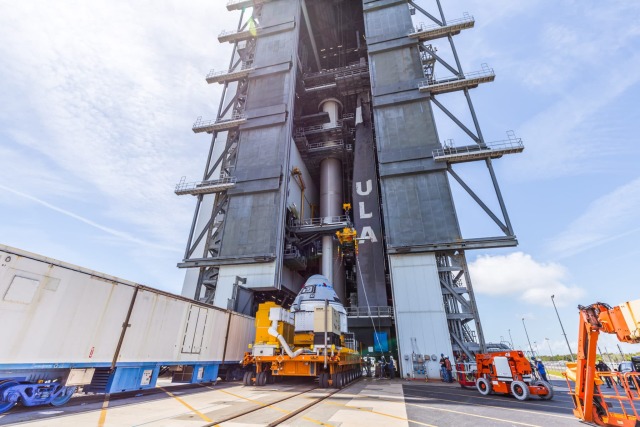Apparently, the development of the long-suffering main competitor "Dragon" SpaceX is coming to the final stage. In less than two weeks, the CST-100 Starliner will embark on its second and final test flight. Boeing representatives assured that all the shortcomings identified during the previous test mission (unsuccessful) have been eliminated.
According to the SpaceNews portal, the second orbital test flight (OFT-2) of the Starliner is scheduled for the evening of May 19 (01:54 on May 20, Moscow time). The National Aeronautics and Space Administration of the United States (NASA) and Boeing concluded that all previously identified shortcomings of the spacecraft have been eliminated or corrected by appropriate changes in procedures. At the moment, the CST-100 is being prepared for launch — its integration with the Atlas V launch vehicle in the ULA vertical assembly building near the SLC-41 launch pad The US Space Force base at Cape Canaveral.
Recall that OFT-2 almost took place last August, but it was canceled a few hours before the launch. At first, the delay was caused by an abnormal operation of the engines of the Russian module "Nauka". Because of this, the entire International Space Station performed one and a half turns around its axis. Therefore, before returning to normal operation, the orbital laboratory was decided to be properly checked. And do not launch ships to it for a couple of days. And on the Ground at this time, another pre-launch check of the Starliner revealed a critical problem — corrosion of the fuel system valves. Of the 24 nodes of the same type, 13 refused to work and the mission was canceled for a detailed investigation.
The reason was the formation of nitric acid from atmospheric moisture and small leaks of nitrogen tetraoxide (NTO, an oxidizer for ship engines). By themselves, small amounts of leaking NTO through Teflon gaskets are not news. This feature of the materials used has been known for a long time and did not pose any big problems, all specialists were able to work with such leaks. Two questions arose: where moisture came from in the fuel system and how corrosion sites were not detected during previous inspections or tests.
Speaking to the press about the imminent launch of the Starliner this May, Boeing representatives did not respond to them. But they said that the company, in cooperation with NASA, conducted a series of studies and tests to study the phenomenon of valve corrosion. Based on their results, a number of procedures have been developed to avoid node failure. In particular, nitrogen tetraoxide refueling will now take place much later during the pre-launch preparation of the ship. And the valves themselves will be subjected to dry cleaning before that. In addition, from the moment of filling with an oxidizer until the launch, the operability of each of them is planned to be checked every 2-5 days.
The valves of the new design will be installed on the next versions of the CST-100, if it turns out to be in time — already on the ship that will fly in the first manned mission. Its terms are still carefully designated as "the end of the year". But, of course, everything will depend solely on the results of the OFT-2. The company eliminated earlier software problems that caused the first test orbital flight to fail at the end of 2019 by last August. In other words, now it looks like the SpaceX Crew Dragon vis-a-vis is fully ready to perform the tasks assigned to it.
Let's put it bluntly — the Starliner represents another blow to Boeing's reputation as one of the most reputable and experienced aerospace companies in the world. Its development was delayed at first for four years (the first flight in 2019 instead of the promised 2015), and a failed test unmanned mission delayed its commissioning for at least two more years. At the same time, the second participant of the Commercial Crew Program — SpaceX — during this time not only managed to prove that Dragon is reliable (30 flights counting all versions), but also to complete the release of reusable capsules. I really hope that the OFT-2 mission will be successful and the CST-100 will finally be operational.

